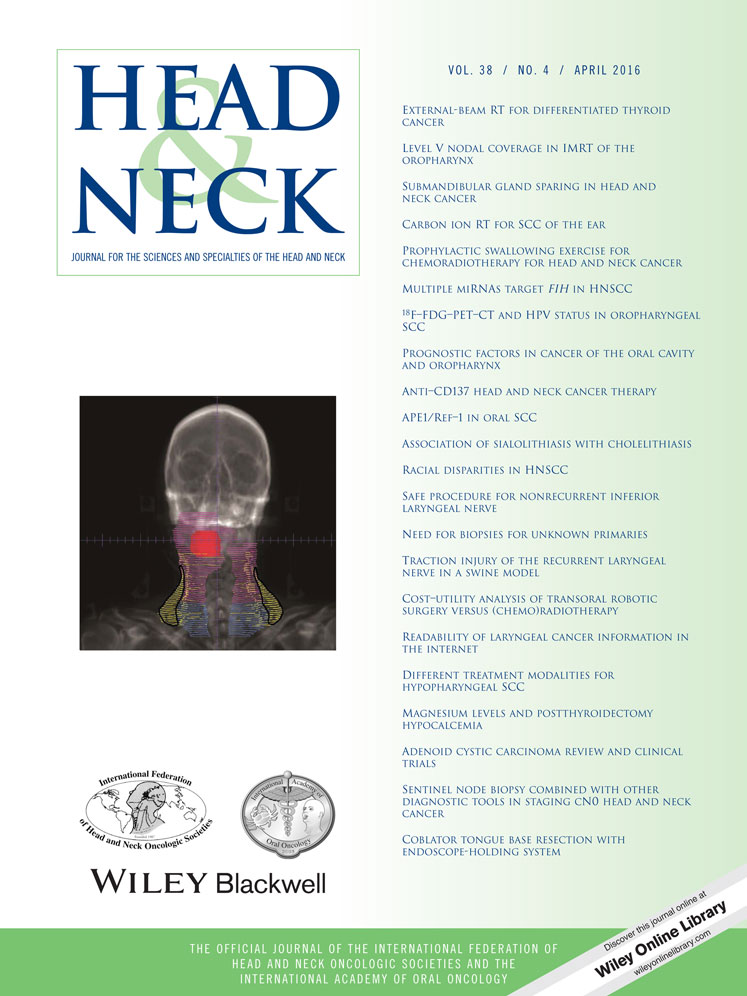68Ga-DOTA-peptide: A novel molecular biomarker for nasopharyngeal carcinoma
Abstract
Background
Increased somatostatin receptor (SSTR) expression in patients with undifferentiated nasopharyngeal carcinoma (NPC) has been demonstrated with receptor autoradiography, 111In-Octreotide scintigraphy, and 68Ga-DOTA-TOC positron emission tomography (PET)/CT imaging. We sought to compare and correlate the uptake of fluorodeoxyglucose (FDG) and DOTA-NOC in undifferentiated NPC to ascertain the possible role of 68Ga-DOTA-NOC PET/CT as a new imaging biomarker and to assess whether targeted peptide receptor radionuclide therapy is a feasible treatment option.
Methods
After obtaining approval from our institutional review board, 4 patients with biopsy proven nonkeratinizing undifferentiated NPC who had just undergone routine staging/restaging 18F-FDG PET/CT imaging were prospectively and consecutively recruited for 68Ga-DOTA-NOC PET/CT imaging. Of these 4 patients, 3 were newly diagnosed with untreated NPC, whereas 1 patient was diagnosed with a case of recurrent NPC with previous treatment. These patients subsequently underwent 68Ga-DOTA-NOC PET/CT within 10 days from the 18F-FDG PET/CT to ensure lesion comparability. Tracer uptake in tumor lesions were assessed visually and semiquantitatively by measuring maximum standardized uptake values (SUVmax).
Results
There were 12 FDG-avid lesions of which 7 showed avid uptake of DOTA-NOC greater than liver uptake, whereas 5 showed low uptake of DOTA-NOC less than liver uptake. Subset analysis of the FDG-avid lesions at the primary and recurrent sites showed that all the FDG-avid primary tumors in the nasopharynx showed avid uptake of DOTA-NOC. On the contrary, the case of recurrent NPC showed avid FDG uptake but low DOTA-NOC uptake. Subset analysis of the suspicious FDG-avid cervical lymph nodes showed that 50% of them demonstrated avid DOTA-NOC uptake greater than liver uptake, whereas the remaining demonstrated low-grade DOTA-NOC uptake less than liver uptake. The 2 subcentimeter cervical lymph nodes that showed low-grade uptake of FDG lower than mediastinal blood pool activity were deemed to be reactive/inflammatory and showed low-grade uptake of DOTA-NOC.
Conclusion
This study highlights the potential of 68Ga-DOTA-peptide PET/CT as a new molecular biomarker for newly diagnosed undifferentiated NPC, and less so for recurrent NPC and metastatic nodes. This potentially opens up new diagnostic and therapeutic options in the management of undifferentiated NPC. © 2015 Wiley Periodicals, Inc. Head Neck 38: E76–E80, 2016




